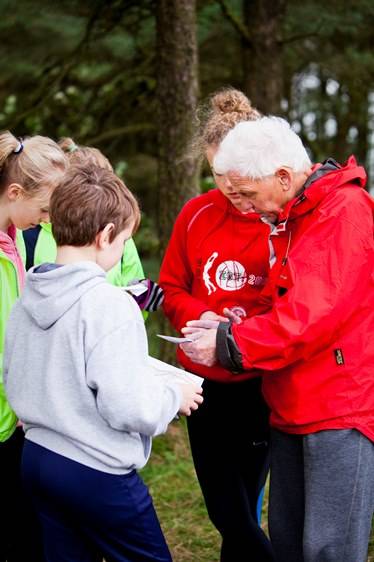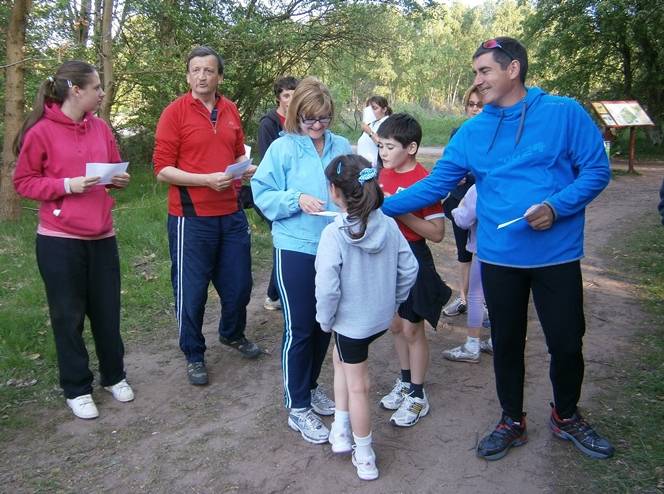Coaching Licence
Over 2,500 coaches have been qualified since the awards began. In order to maintain a register of coaches that British Orienteering is confident are active and knowledgeable in current coaching methods a ‘License to Coach’ scheme is in place.
The term 'Licence to Coach' identifies those Orienteering Coaches meeting the following criteria:
- Are a current member of British Orienteering
- Demonstrated competence against the standards at the appropriate Coaching Award Level
- Signed to confirm you accept the British Orienteering Code of Conduct for Coaches - British Orienteering Code of Conduct
- An appropriate (see below) First Aid qualification
- Attend a relevant Safeguarding course (tutor led for children or online if you only coach adults) (see below)
Coaches who are licensed to coach will be covered by the British Orienteering Public Liability (£10m) and Professional Indemnity insurance (£5m) and able to register and run coaching activities. Please note that under the British Orienteering insurance policy you will only be covered while you are coaching in an area which is determined by your Coaching Qualification and your level of First Aid qualification.
In addition to the insurance cover, we will promote you as a licenced coach and are currently encouraging all parents, clubs and associations to use coaches that are licenced and up to date in their knowledge and practice.
Please note that it is likely a coach will need a DBS to check your eligibility follow this link.


Becoming a Licensed Coach
Please contact the National Office who will require evidence of the above, either paper copies or scanned copies will be acceptable and these can be sent either through the post to the address included here below:
Scholes Mill
Old Coach Road
Tansley
Matlock
Derbyshire
DE4 5FY
Or by email to info@britishorienteering.org.uk
Maintaining a License to Coach
CPD Logs: Keeping a log of the following is good practice and helps to identify that you are an active coach:
- coaching sessions you have planned and delivered or helped another coach and
- the various ways in which a coach can develop their knowledge e.g. attending CPD workshops, coaching conferences, maintaining the appropriate first aid qualification
For a number of logistical reasons it has proved to be difficult to include the maintenance of a coach’s CPD log in the Licence to Coach but association coach representatives will still be asked to list which coaches in their association are active and may ask to see a coaching log as evidence.
- They have a current First Aid qualification that is appropriate to the areas and environments they will be working in. As a coach they may choose to attend whichever length (and therefore content) of First Aid course they think is most appropriate be it 3 hours (Emergency First aid), 1 day (Emergency and Basic First Aid) or 2 days (Practical First Aid), based on a risk assessment of the area in which they are coaching. Different providers of First Aid will offer those length courses but they may have different names. It is the coach’s responsibility to maintain their First Aid qualification.
Please note the linkage between area types for both Qualification level and First Aid qualification level:
- A coach with a Level 1 Coach Award, old Level 1 or old Level 2 qualification is insured to coach on type A and B areas
- A coach with a Level 2 Coach Certificate or old Level 3 is insured to coach on type A, B and C areas
- A coach with a Level 3 Coach Certificate or old Level 4 or 5 qualifications is insured to coach on A, B, C and D areas. A coach with Level 2 Coach Certificate or old Level 3 who has attended the workshop ‘ Safety for Coaches Working in Remote and/or Exposed Areas’ is insured to coach on A, B, C and D areas.
- A coach with an Emergency First Aid qualification or equivalent is insured to coach on type A and B areas
- A coach with an Emergency and Basic First Aid qualification is insured to coach on type A, B and C areas
- A coach with a Practical First Aid qualification is insured to coach on type A, B, C and D area.
Note that for all coaching sessions a Risk Assessment must be completed; for more details see Safety Guidelines below.
To update your membership records, please send a copy of the certificate to the national office via info@britishorienteering.org.uk.
Safeguarding Requirements
There are different regulations for coaches in Scotland. Details are listed further below or found here via the Scottish Orienteering website.
England, Wales and Northern Ireland
For active coaches, depending on who they coach, they will need to complete the following requirements;
- Young people - It is a requirement to have tutor-led training to be a licensed coach.
- Adults - It is required to complete an appropriate on-line safeguarding module.
- Adults at risk – It is strongly advised that they attend an on-line self-led adult safeguarding training.
The training should be updated every three years. After three years, following an initial tutor led course, the refresher can be an online module.
Tutor led training – for coaches training young people
British Orienteering currently doesn't deliver centrally run tutor led courses.
Coaches are recommended to sign onto a general, tutor led, UK Coaching Safeguarding & Protecting Children workshop or Sport NI course and on completion, submit the certificate to British Orienteering for your records to be updated.
Online Safeguarding Module
Should coaches only work with adults, you will need to complete an appropriate on-line safeguarding module. There are a number of courses available including the British Orienteering Introducing Safeguarding eLearning course which can be found here. On completion, submit your certificate to British Orienteering for your records to be updated.
Scotland
Safeguarding – Child Wellbeing and Protection in Sports (CWPS)
This course has 2 steps both of which must be completed for an SOA coach to be qualified in their Safeguarding training.
These are:
- Complete the SportScotland elearning module on Child Wellbeing and Protection in Sport. This takes about 45 minutes. Access to the Module 1 course materials can be gained by clicking on this link: https://sportscotland.info/childwellbeing/v4/index.html
- Attend and complete the tutor led 3 hour training: this is normally face to face training but it is currently being delivered online.
